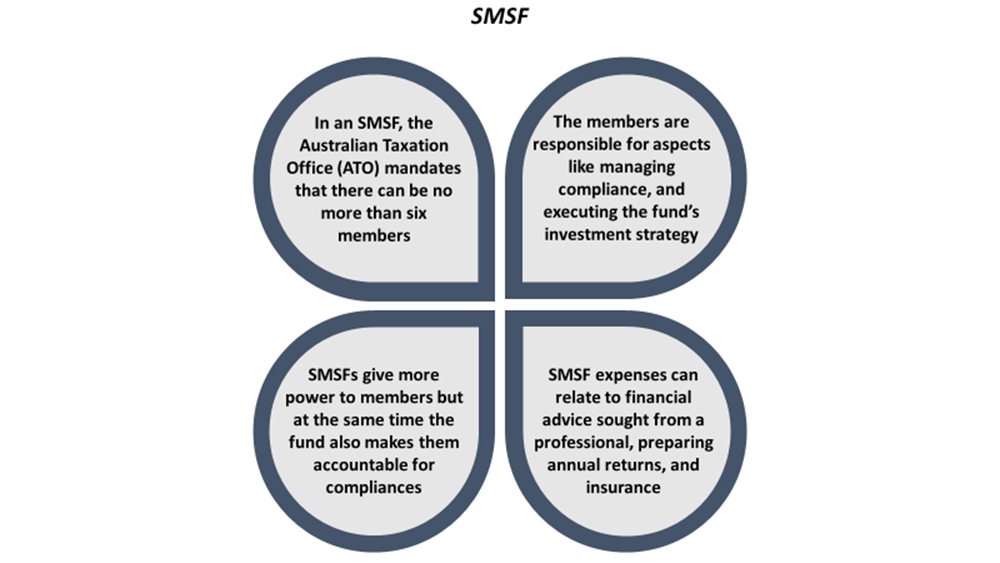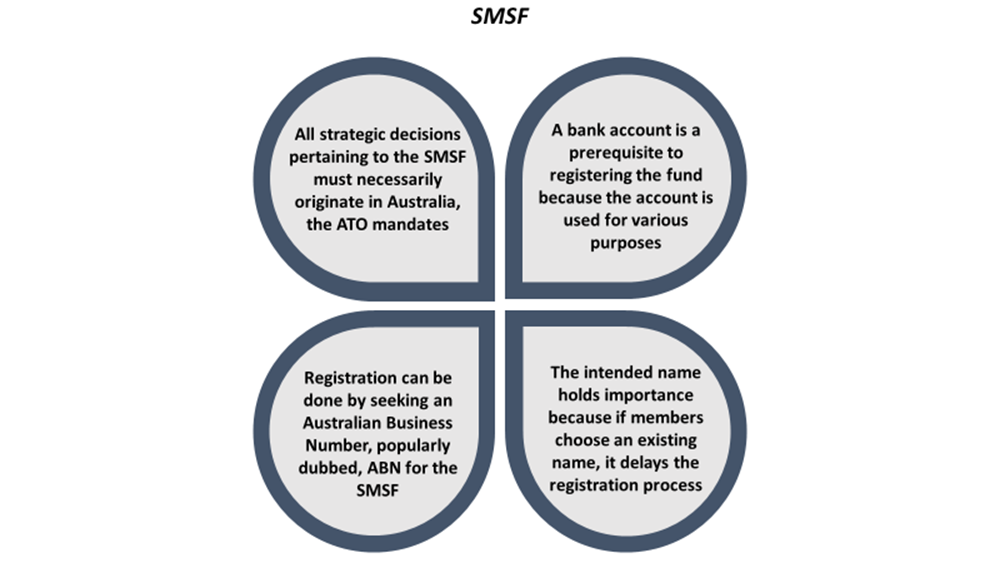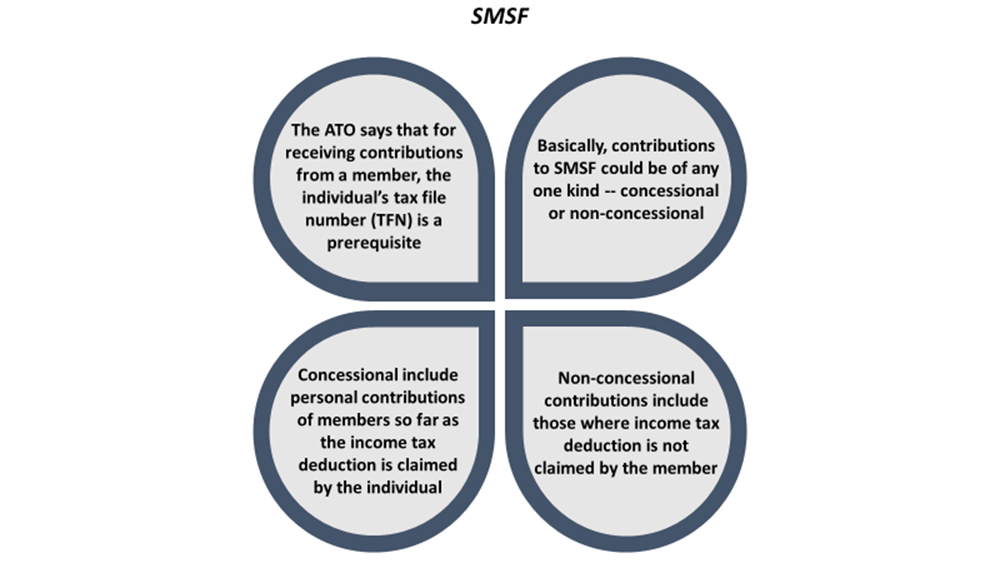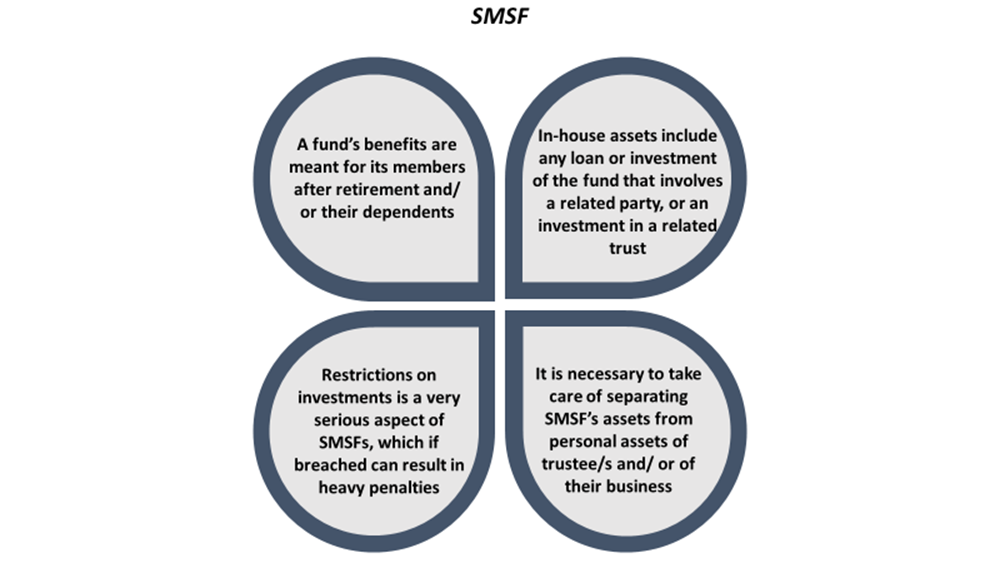Saving is as important as earning. It can be said that the money you save out of your earnings pave the way for future financial wellbeing. Earnings can come under pressure due to several factors, for instance- losing a job or retiring from work after attaining the age of superannuation. There is also a difference between saving for near term needs, like money parked in term deposits with banks, and saving for longer term needs, like funds parked for a better life after retirement.
Self-managed super fund or SMSF falls into the latter category. This fund helps Australians manage their financial needs after retirement. An SMSF comes with wide ranging pluses, thereby making them a preferable saving instrument for the longer horizon. Detailed below are some of the important aspects of SMSFs that can help in setting up funds and managing investments.
SMSF vs. other superannuation funds
Even though all super -- which means superannuation -- funds are designed to provide retirement benefits to Australians, an SMSF differs from others in the following ways.
Members
In an SMSF, the Australian Taxation Office (ATO) mandates that there can be no more than six members. These members can be trustees in their individual capacity, or they can be directors of the fund’s corporate trustee. Since some state laws might impose limits on the number of trustees in a trust, SMSF members must be aware of all applicable rules.
In funds other than an SMSF, no restrictions usually exist on the number of members. Also, unlike in SMSFs, where all members can actively manage the fund, only licensed trustees can do so in other super funds.
Decision making
In an SMSF, the members are responsible for everything from managing compliance to devising and executing the fund’s investment strategy. In addition to this, if there is any lapse with respect to applicable rules and laws, individual members of the SMSF can be fined.
By contrast, in other super funds, it is the responsibility of professional licensed trustees to take care of compliances and most investment decisions are made by these professionals.
Other aspects
SMSFs give more power to members but at the same time the fund also makes them accountable for compliances. In case there is a dispute or disagreement between the members of an SMSF, it should be resolved using alternative dispute resolution (ADR) and the government does not provide any compensation for the costs involved. Financial assistance is also not available to SMSFs in the event of theft or fraud.
Funds other than SMSF can be said to be less burdensome on members in that disputes among members can be resolved by the Australian Financial Complaints Authority (AFCA) in an arrangement that also provides statutory compensation to the eligible fund. Besides, financial assistance from government is available for eligible funds in cases of theft or fraud.

Image: © 2023 Krish Capital Pty. Ltd.
Is SMSF costly?
This largely depends on how the members of any SMSF manage the fund. A few costs are indispensable including an annual independent audit. Not all SMSFs can afford to have members that can formulate their own strategy. And hence, expenses related to financial advice sought from a professional, preparation of annual returns, insurances, and legal fees may have to be additionally borne for smooth functioning of the fund.
In some cases, like understanding complex tax related compliances, it is advisable to seek the assistance of legal and other professionals in order to make sure that the fund operates without violating any law.
How to set up an SMSF?
Tax benefits, which are explained later in this guide, are available to SMSFs. However, it is extremely important to ensure that the first step of setting up the fund is compliant with all laws. For this, if interested members lack knowledge of applicable laws, seeking the help of professional advisers is even suggested by the ATO. From an adviser who can help in devising the financial strategy to legal advisers that can prepare an error-free trust deed, professionals can provide solutions.
Listed below are some of the requirements that cannot be overlooked.
Appointment of trustees
Interested members must either choose the individual trustee structure or a corporate trustee arrangement. In latter, directors must have the director identification number, but if it is a single-member fund, the director/s need not have a director ID. Costs involved in having a corporate trustee arrangement can be relatively higher because of charges like first time registration of trustee/s by the Australian Securities and Investments Commission (ASIC).
A trust deed is executed to appoint trustees and directors and all such appointments should be made after attaining the consent of the concerned individual. The minimum age to be eligible for appointment as a trustee of an SMSF is 18 years. Bankrupt or convicted persons are ineligible to be a trustee.
Trust Deed
A trust deed is the fundamental document, and hence requires close attention. The document is exhaustive and contains details of all trustees, the assets held, and the rules that govern the fund’s operations. The deed must also contain details about how the benefits are proposed to be paid to members, for example, as a regular income stream after retirement or as a lump sum.
The trust deed of the SMSF needs to be executed in accordance with applicable state laws, and it should bear the signatures of all trustees. Assets, which can even be a nominal sum of AU$10 in the beginning, must also be a part of the deed.
Residency of fund
This aspect is as important as the trust deed. Here, the SMSF must necessarily meet all the below requirements mandated by the ATO.
- Established in Australia - The initial contribution to set up an SMSF must be paid and accepted within the country in order to meet the first requirement. The ATO also says that an alternative to this can be that at least one of SMSF’s assets should be located in Australia.
- Management and control - All strategic decisions pertaining to the SMSF must necessarily originate in Australia. This requirement states that from the investment strategy formulation to decisions regarding the use of fund’s assets for members’ benefits should be made within the country.
- Australian residents - The third condition is that the SMSF should either have no active member or when it has, Australian residents must hold a minimum of half of fund’s total market value or of the amount that would become payable to active members in the event they quit the fund.
It is specifically stated that if an SMSF fails the residency test at any stage, either the fund should be wound up or funds must be rolled over to a resident regulated super fund.
Registration
The next step after setting up the SMSF and appointing its trustees is registering the fund with the ATO. This can be done by seeking an Australian Business Number, popularly dubbed, ABN for the SMSF. Obtaining an ABN is an elaborate exercise and the below mentioned elements must be taken care of for a smooth ride.
- The ATO specifies that a fund can use the services of an Australian Business Register's tax professional for the purpose of obtaining the ABN. Before the registration process, things like choosing individual or corporate trustee structure, transferring of asset to the SMSF, and checking the residency status can help the members or the tax professional to fill the application form easily.
- The application form seeks wide ranging information before the grant of ABN. In a scenario where the fund held an ABN on a previous occasion, it can be reinstated by making a call to the ATO. New funds, however, would need to seek both the ABN and the tax file number (TFN).
- The next step involves questions about the fund’s type. A few questions like ‘What type of fund is the applicant’ and whether the applicant is a government organisation can be left unanswered in the application form. Funds that use the services of a professional must have the agent’s registration number so that they can easily act on behalf of the fund. The intended name of the SMSF holds importance because if members choose an already existing name, it delays the registration process. The best way is to perform a look up at the ATO portal before choosing the name.
- Next important information to be filled in the form is the fund’s business details. There should be at least one business address. The ATO specifies that this address could also be the residence of any one of the trustees of the fund. Since having a bank account and electronic service address mentioned later in this article is also necessary, the fund should have them ready.
- A key element in registering is the requirement of GST registration. Here, the ATO says that if the annual turnover of the fund is over AU$75,000, the SMSF must have GST. That said, calculating the turnover involves not including things like contributions and interest and dividends. Commercial property lease income, however, is to be included.
Bank account
A bank account is a prerequisite to registering the fund because it is used for various purposes including accepting contributions from members and depositing income from fund’s investments. The ATO has clearly specified that a fund with no unique bank account offers no protection toward members’ retirement benefits. The term ‘unique’ here means the account should be separate from trustees’ individual accounts.
Electronic service address
SuperStream, the data and payment standard, plays a role in contributions by employers to an SMSF. And hence, if the fund receives such contributions, it must take care of SuperStream data, which necessarily needs an electronic service address (ESA). A contributing employer also needs information on ESA as well as about the fund’s ABN and bank account.

Image: © 2023 Krish Capital Pty. Ltd.
Contributions to SMSF
Once the fund is set up and an ABN is attained, the next big thing is contributions to the fund by its members. Here, it is essential to understand that the ATO has mandated some restrictions. Besides, allocation of the member’s contribution should be done in the member’s account within 28 days from the month’s end when such funds are received.
Acceptable contributions
The ATO specifies that for receiving contributions from a member, the concerned individual’s tax file number (TFN) is a prerequisite. Mandated employer contributions can be added to the fund. In the event when a member is 75 years or more, non-mandated funds contributions cannot be received.
First, with respect to any member from whom TFN is not received, the contribution made to the fund must be returned before the expiry of 30 days of such receipt. Second, mandated employer contributions, which relate to any law or agreement, can be accepted without any restriction on the concerned member’s age or working hours. Third, for members aged below 75 years, the fund can accept virtually all types of non-mandated funds like personal and eligible spouse contributions.
Limits on contribution
Basically, contributions could be of any one kind -- concessional or non-concessional. According to the ATO, contributions which are a part of the fund’s assessable income are concessional, while those that are not included in assessable income are non-concessional.
Australians know that SMSFs bring to them the advantage of concessional rate of tax. Concessional contributions are taxed at this rate, which is 15%. Examples of concessional include employer’s contributions and personal contributions of members so far as the income tax deduction is claimed by an individual on such personal contribution to the fund.
The annual cap on concessional contributions, with effect from 1 July 2021 is AU$27,500. This cap is applicable regardless of the age of the individual. That said, there is also a provision to carry forward unused concessional contributions for five years, given the total super balance of the member does not exceed AU$500,000.
Typical examples of non-concessional contributions include those where income tax deduction is not claimed by the member and excess concessional contribution during any financial year. Effective 1 July 2022, there is a cap of AU$110,000 on non-concessional contributions. It is important to know that a tax rate of 47% kicks in on any amount in excess of the figure, with individual members personally liable.
Deductions for personal contributions
As stated earlier, personal contributions, so far as the member claims tax deductions on related amount, falls under concessional contributions. But the contributing member is required to notify, by way of a notice to the SMSF, the intention of claiming income tax deduction.
The ATO suggests any such notice holds no significance in the event the member has ceased to be a part of the SMSF and on a few other occasions. The fund must issue acknowledgment with respect to a valid notice received by specifying the date of receipt, fund details and other key elements. An acknowledgement helps the contributing member to claim deductions.
Preparing the fund’s investment strategy
The ATO requires that an SMSF’s investment strategy necessarily be in writing. That said, it can be tailored any time in future to meet the objectives of members. In particular, the fund’s strategy must consider elements like the age of members, their employment status, and superannuation needs.
It is also mandated that the strategy should include the risks attached to making and holding any investment, besides the realisation of investment and probable returns. Since the SMSF investment route allows investments in a variety of assets, the strategy should take care of diversity in asset classes as well as how liquid the investment assets are.
Another important element is considering the need to hold insurance for any or all fund members. The ATO states that whatever is the percentage of allocation to a particular asset class, it should be mentioned in the investment strategy.
Restrictions on investments
Super laws exist in the country, which can impose restrictions on the kinds of investments an SMSF intends to make. First, it is necessary to meet the objectives set out in the trust deed. Second, the ATO has the sole purpose test, explained later in this article, which imposes legal restrictions on investments.
Any breach of super laws can lead to compliance action taken by the ATO against members. This can even result in penalties imposed on the defaulting SMSF and/ or disqualification of any or all trustees.
Can you invest in one asset class?
Here, the ATO gives control in the hands of trustees, who can even choose to hold only one asset class in the fund. However, it is advisable to have a diversified portfolio, which experts say can help minimise risks and enable better returns. Still, if any SMSF decides to concentrate on a single asset class, this ‘concentration risk’ should be made a part of the investment strategy.
It is also advised by the ATO that trustees must regularly assess their fund’s strategy. It might need a review on occasions such as a market correction that can affect the assets held by the fund. Also, in the event of any member leaving the fund or a new one joining, the strategy might need to be reviewed to meet new objectives.
SMSF investment strategy, auditor, and non-compliances
An auditor undertakes the annual audit of the SMSF, and it is during this exercise that things like whether the fund meets its declared investment strategy are also checked. The ATO places the onus on the fund’s auditor to report any non-compliance of strategy by filing an auditor contravention report (ACR).
What happens in cases of non-compliance? The ATO allows filing of a signed addendum to the strategy with the auditor ahead of the completion of audit. Remember, that the ACR is to be filed by the auditor only in cases when any non-compliance related to a previous year is not rectified by trustees and/ or when the same non-compliance is repeated by the fund in an immediately subsequent year.
Things don’t become too complicated even after the filing of ACR by the auditor. The ATO allows rectification by the SMSF. However, in some cases penalties can be imposed and hence it is always advisable to abide by the financial strategy and in case of any diversions, to make timely rectifications.
Insurance
The investment strategy of an SMSF could be incomplete without insurance for member/s. The ATO also suggests that while formulating the strategy, trustees must consider the option of insurance.
Here, insurance can be provided for any member/s with respect to the following events and with scope for release of super funds:
- Death or terminal medical emergency of the member
- Permanent or temporary incapacity of the member (causing cessation of work)
Another important element is trauma insurance, which involves payment of a lump sum to an individual who becomes critically ill due to diagnosis of ailments like cancer or heart attack. The ATO has clearly mentioned that this is inconsistent with above cited events because lump sum in a trauma insurance is even paid when the affected individual does not cease work or becomes permanently disabled.
Further, it is stated that any insurance must necessarily meet the sole purpose test, which implies benefits of the policy must accrue to a trustee of the fund and these benefits have to be made a part of the fund’s assets till the time the concerned member satisfies the terms of release. Besides, no insurance policy can be acquired for the benefit of some other person, including the member’s relative.
What is sole purpose test?
What is the purpose of any SMSF? Indeed, it is to provide retirement benefits to member/s or their surviving dependent/s in the event of member’s death. This purpose must always be abided by, which infers that any activity should not lead to benefits accruing to any fund member before retirement.
The ATO clearly states that it is the sole purpose of any SMSF to operate for retirement benefits. No direct or even indirect benefit can accrue to any member before retirement and hence, the investment strategy of the fund should be in compliance with this rule.
For example, if a fund decides to hold any collectable like an artwork as an asset, it should not be accessible for use by any member. Simply stated, pre-retirement benefits are not the purpose of SMSFs, and in cases of contravention, civil and criminal penalties can kick in. Besides, when the sole purpose test is met, it leads to concessional tax benefits for the fund. If the fund fails the test at any time, this benefit stops.
The recent case of DomaCom Australia Ltd
The ATO states that in order to decide the question of purpose of the SMSF, all facts and circumstances around the fund and its investment decisions are considered so that the actual behaviour of trustees can be determined.
On a previous occasion, it has been held that there could be a violation of sole purpose test in case the fund invested in a sub-fund of DomaCom, and the intention was to provide a way to a related party. Now, DomaCom Fund provides a ‘Sole Purpose Test Declaration’ alongside its products, which when signed means that trustees have agreed to avoid any breach of sole purpose test.
A copy of this signed declaration should be retained by the SMSF, it should be made accessible to the fund’s auditor, and there must be no evidence that suggests the fund has violated the declaration. By abiding by these, the fund can make sure that the ATO does not initiate any compliance activity against trustee/s.
How to manage the fund’s assets?
The theme here is that all investments of the SMSF must be managed separately from that of its members in personal capacity. Here, the motive is to prevent the funds held in the SMSF from any adverse circumstances like a creditor dispute.
This can be achieved by separating SMSF’s assets from personal assets of trustee/s and/ or of their business, and by specifically establishing clear legal ownership of the SMSF. There is a clear direction that assets other than cash have to be held in the form of ‘as trustees for’ the fund to distinguish them from personal assets of trustee/s.
Here, by having a corporate trustee structure for the fund, the advantage can be that in the event of a change in director/s, ownership paperwork is not required to be amended. This is because the trustee of the fund is the company. The ATO also suggests that by having a corporate trustee, it is comparatively easier to prevent SMSF’s funds from getting mixed with personal assets.
That said, it is understandable that when there is no corporate trustee and an individual either enters or exits an SMSF, ownership paperwork has to be amended to reflect changes in name.
There is also a chance that any state law may prevent recording of ownership of an asset in the name of the SMSF. In such cases, use of caveats or a declaration of trust or other such methods can be helpful so that the SMSF can assert ownership over the concerned asset.

Image: © 2023 Krish Capital Pty. Ltd.
Investment restrictions
‘Arm’s length’ is an extremely critical term for SMSFs. It means the purchase and sale of any asset should be at a fair market value, which can only be attained when the parties to the transaction operate on an arm’s length basis.
To be specific in this regard, no asset should be bought from, or money lent to members of the SMSF or related parties. A few exceptions, discussed later in this guide, exist to this rule. Besides, there is a blanket restriction on an SMSF from borrowing money.
Restrictions on investments is a very serious aspect of SMSFs, which if breached can result in heavy penalties and even prosecution of fund’s trustee/s.
Who is a related party?
Fund’s trustees, their relatives, business partners (including their spouse and children), and any company or trust in which the SMSF’s trustee has control or influence fall under related parties. Besides, standard employer-sponsors that contribute to the SMSF for benefit of an employee member, and any associate of these standard employer-sponsors are also considered related parties.
What about loans and SMSF?
The fund’s benefits are meant for members after retirement and/ or their dependents. By acknowledging this basic rule, it is easy to understand that the fund cannot provide either direct or indirect financial help to a member or member’s relative. There is no scope for the fund to undertake activities like guaranteeing repayment of a member’s personal loan.
Any money lent by an SMSF should meet the arm’s length basis test and the transaction should have a commercial value.
Can a fund acquire an asset from a related party?
Even though we have earlier talked about restriction on any transaction with a related party, the exception is that the asset is acquired at market value, and it is either a listed security like shares trading on a stock exchange or is a business real property or something specifically excluded from in-house assets. An in-house asset can also be acquired but the condition is that the market value of such an in-house asset must not be more than 5% of fund’s assets’ aggregate market value.
The ATO also mandates that in the event where an asset is acquired by the fund at a price less than its market value, the difference between purchase price and market value has to be recorded as a contribution.
What is an in-house asset?
Any loan or investment of the fund that includes a related party, or an investment in a related trust, or the fund’s assets leased to a related party are all in-house assets. The ATO states that these in-house assets’ value cannot be more than 5% of total assets’ value.
In an event where the share of in-house assets exceeds the above-mentioned cap, the SMSF has to prepare a written plan by the end of the financial year citing how the share can be reduced to 5%. This written plan has to be prepared and implemented before the end of the next financial year.
Is business real property an exception?
Yes, it is an exception when it comes to in-house asset rules of the ATO. Such property (land and buildings) is what is used exclusively in business. Besides, the condition is that there has to be no loan or charge over such an asset of the fund, expect in cases where a limited recourse borrowing arrangement is in place.

Image: © 2023 Krish Capital Pty. Ltd.



